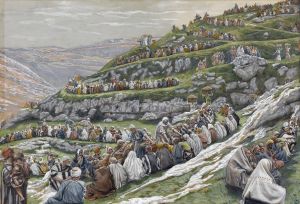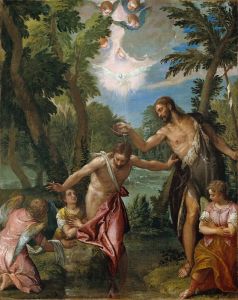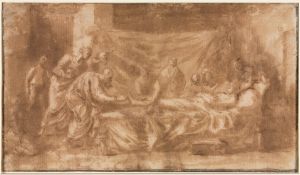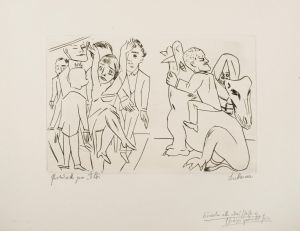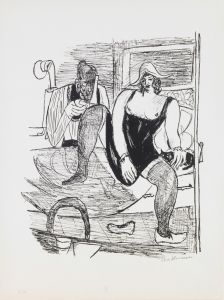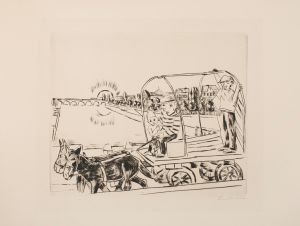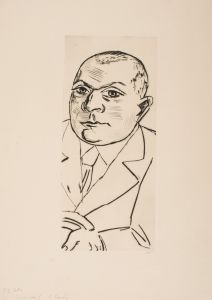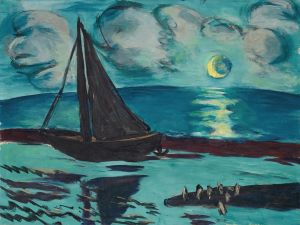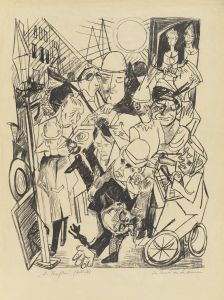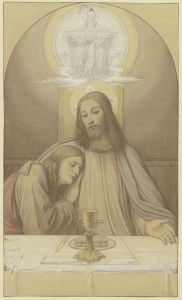
The Baptism of Christ, plate 2 from the portfolio ‘Six Lithographs to the New Testament’
A hand-painted replica of Max Beckmann’s masterpiece The Baptism of Christ, plate 2 from the portfolio ‘Six Lithographs to the New Testament’, meticulously crafted by professional artists to capture the true essence of the original. Each piece is created with museum-quality canvas and rare mineral pigments, carefully painted by experienced artists with delicate brushstrokes and rich, layered colors to perfectly recreate the texture of the original artwork. Unlike machine-printed reproductions, this hand-painted version brings the painting to life, infused with the artist’s emotions and skill in every stroke. Whether for personal collection or home decoration, it instantly elevates the artistic atmosphere of any space.
Max Beckmann, a prominent German painter and printmaker, created "The Baptism of Christ, plate 2 from the portfolio ‘Six Lithographs to the New Testament’" as part of a series that reflects his engagement with biblical themes through modernist expression. Beckmann, known for his distinctive style that combines elements of Expressionism and New Objectivity, often explored complex themes of human existence, spirituality, and the human condition in his work.
This particular lithograph is part of a portfolio that Beckmann completed in 1942, during a period of exile from Nazi Germany. Beckmann had fled to Amsterdam in 1937 after his art was labeled "degenerate" by the Nazi regime. The portfolio, "Six Lithographs to the New Testament," was created during a time of personal and global turmoil, which is often reflected in the intensity and depth of his work from this period.
"The Baptism of Christ" depicts the biblical scene of Jesus being baptized by John the Baptist, a significant event in the New Testament that marks the beginning of Jesus' public ministry. Beckmann's interpretation of this scene is likely to be imbued with his characteristic style, which often includes bold lines, dramatic contrasts, and a sense of psychological depth. His works frequently convey a sense of tension and introspection, which may also be present in this lithograph.
Beckmann's choice to engage with New Testament themes during this time could be seen as a reflection of his own search for meaning and redemption amidst the chaos of World War II. The biblical narrative of baptism, symbolizing purification and renewal, might have held particular resonance for Beckmann as he navigated the challenges of exile and the broader context of a world at war.
The portfolio "Six Lithographs to the New Testament" is an example of Beckmann's continued exploration of religious and existential themes through his art. His work often transcends simple religious illustration, instead offering a complex, layered interpretation that invites viewers to contemplate deeper philosophical and spiritual questions.
Beckmann's lithographs from this series are notable for their technical skill and emotional impact. Lithography, a printmaking process that involves drawing on a flat stone or metal plate with a greasy substance, allows for a range of textures and tones, which Beckmann skillfully employs to enhance the expressive quality of his images.
Max Beckmann's contribution to modern art is significant, and his works continue to be studied and appreciated for their unique perspective and profound engagement with the human experience. "The Baptism of Christ" from the "Six Lithographs to the New Testament" portfolio stands as a testament to his ability to convey complex narratives and emotions through his art, offering viewers a glimpse into both the biblical story and the artist's own inner world during a tumultuous time in history.





